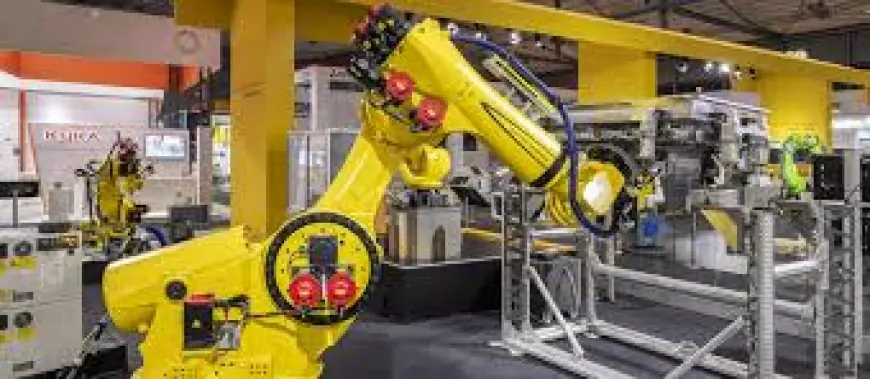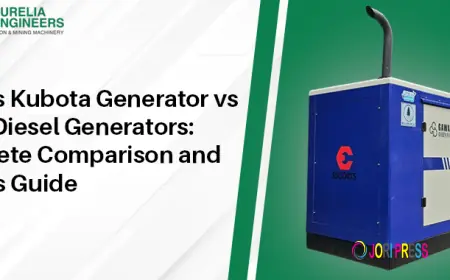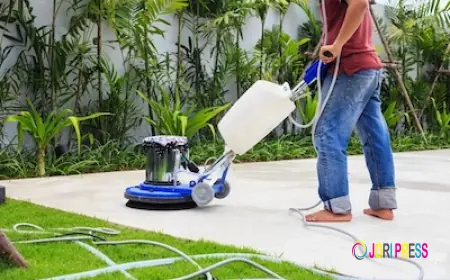Everything You Need to Know About Automation System Installation
Discover all you need to know about automation system installation—from planning and setup to benefits and best practices for maximizing efficiency and ROI.

Thinking about upgrading your facility with automation? You’re not alone. Automation is becoming the standard across industries—from manufacturing and logistics to food processing and pharmaceuticals. But before jumping into the deep end, it’s important to fully understand the ins and outs of automation system installation.
This isn’t just a plug-and-play scenario. Whether you're automating a single process or your entire production line, a solid plan and proper installation are key to long-term success. If you're unsure where to begin, this guide has you covered.
Let’s walk through everything you need to know about Automation System Installation so you can approach your project with confidence.
What Is Automation System Installation?
Simply put, automation system installation is the process of setting up machines, control systems, and software to automate specific tasks within an operation. This can include installing robotics, PLCs (Programmable Logic Controllers), sensors, HMI panels, and integration with existing machinery or software platforms.
Done right, this setup can reduce labor, boost productivity, and ensure precision with every cycle. But it takes more than just equipment—it requires planning, customization, and expertise.
Why Is It Important to Get Installation Right?
Here’s the thing: even the best automation systems can fail if they’re installed incorrectly. From misaligned components to bad software integration, a poor setup can lead to costly downtime and safety issues.
A properly installed system:
-
Functions efficiently from day one
-
Reduces the need for rework or constant troubleshooting
-
Improves ROI by avoiding costly mistakes
-
Ensures safety compliance and reliability
So yes, installation is just as important as the tech itself.
1. Assessing Your Needs and Goals
Before anything is installed, you’ve got to know what you're aiming to achieve. Are you looking to speed up production? Improve accuracy? Reduce manual labor? Start by evaluating your current workflow and identifying the pain points automation can solve.
Every operation is different, so a one-size-fits-all approach simply won’t cut it. Make sure your automation plan is tailored to your specific production goals.
2. Choosing the Right Automation Technology
From robotics to smart conveyor systems, there are plenty of tools out there. The trick is choosing the ones that suit your workflow and budget. Consider the type of automation—discrete, process, or hybrid—and pick solutions that align with your industry’s needs.
If you're unsure which solution fits best, consult with an automation expert who can guide you through the available technologies and recommend the most efficient fit.
3. Site Preparation and Infrastructure Evaluation
This part is often overlooked, but it’s critical. Your physical space must support the automation setup. That includes power requirements, network infrastructure, mechanical support, and safety considerations.
Before installation begins, make sure your space is properly prepared—no loose cables, poor lighting, or cramped layouts that could interfere with system performance.
4. Integration with Existing Systems
Let’s face it: most businesses aren’t starting from scratch. You likely have existing machines and software that need to work hand-in-hand with the new automation system. This is where seamless automation system installation becomes essential.
You’ll need compatibility across platforms and protocols. Integration should ensure that data flows smoothly from one part of the operation to the next, without creating bottlenecks or silos.
To get help with smart system integration and controls, explore this automation solutions page for detailed service offerings.
5. PLC Programming and Customization
The brains behind many automation systems is the PLC (Programmable Logic Controller). These are programmed to execute specific tasks—like controlling a motor, measuring temperature, or reacting to a sensor input.
Installation usually involves custom PLC programming to match the workflow requirements of your facility. This allows you to control each process with precision, ensuring safety, speed, and repeatability.
6. Installing Sensors and Smart Devices
Sensors are like the senses of your system. They detect everything from object presence to temperature, pressure, and speed. During installation, placing sensors correctly is vital to ensure accurate data collection.
With the rise of smart manufacturing, many sensors today are IoT-enabled, providing real-time feedback and enabling remote monitoring through cloud platforms.
7. Testing and Commissioning the System
Once everything is installed, it’s testing time. This stage involves validating each component, checking safety protocols, and simulating real-time operations. Think of it as a dress rehearsal before the actual performance.
Testing ensures that all subsystems are functioning as expected and that your team knows how to operate and troubleshoot them.
8. Training Your Staff
A great automation system is only as good as the people running it. After installation, it’s essential to train your operators, technicians, and maintenance staff. This includes:
-
Understanding the control interfaces
-
Recognizing error codes
-
Performing basic troubleshooting
-
Knowing emergency shutdown procedures
Training builds confidence and reduces downtime due to operator errors.
9. Maintenance Planning and Support
Even automated systems need some TLC. A good installation provider will help you set up a maintenance schedule, spare parts list, and remote support systems to keep everything running smoothly.
Preventative maintenance will reduce costly breakdowns and extend the life of your equipment—saving you money in the long run.
10. Partnering with the Right Installation Team
This might be the most important part of the process. Working with experienced, certified professionals ensures your automation system is installed correctly and runs efficiently from day one.
Make sure your installation partner offers:
-
Custom design and engineering support
-
On-site assessments and site prep guidance
-
Post-installation support and troubleshooting
-
Long-term upgrade and scalability planning
If you're looking for a proven team that specializes in full-service automation system installation, be sure to choose one that delivers tailored solutions with long-term value.
Benefits of a Successful Installation
A well-executed installation doesn’t just make life easier—it transforms your entire operation. You’ll see:
-
Higher production efficiency
-
Reduced labor costs
-
Fewer human errors
-
Improved product quality
-
Better use of data for decision-making
And the best part? The system grows with your business, giving you the flexibility to scale and evolve as needed.
Final Thoughts
There’s no doubt about it—automation is the future of industry. But jumping into it without the right preparation and expert guidance can do more harm than good.
By taking the time to plan thoroughly, work with trusted professionals, and focus on seamless integration, you’ll set your operation up for years of success.
Whether you're automating a single process or rolling out a full-factory upgrade, the path starts with smart, reliable automation system installation. So take the first step—your future factory is waiting.
What's Your Reaction?
 Like
0
Like
0
 Dislike
0
Dislike
0
 Love
0
Love
0
 Funny
0
Funny
0
 Angry
0
Angry
0
 Sad
0
Sad
0
 Wow
0
Wow
0

















































